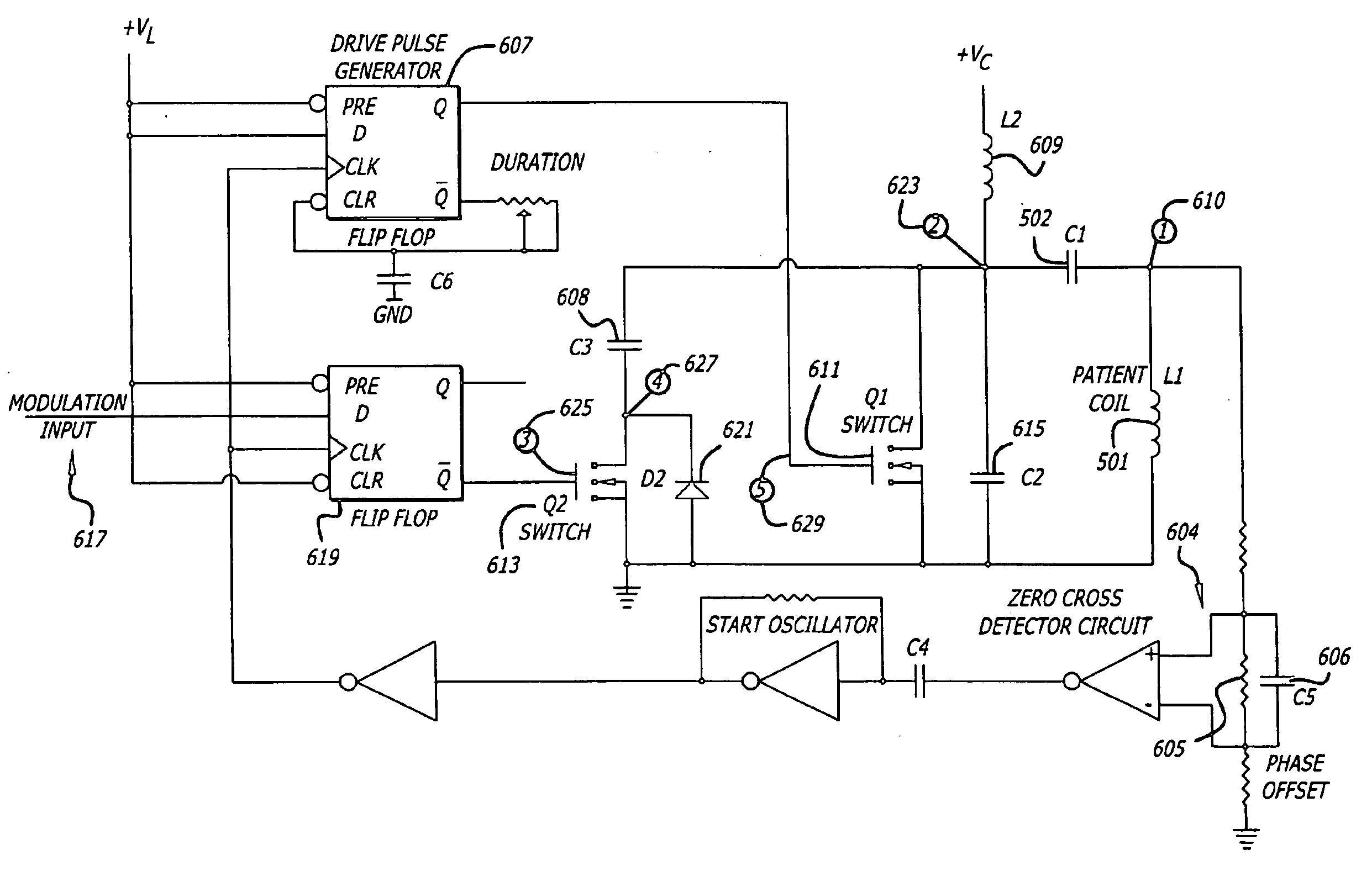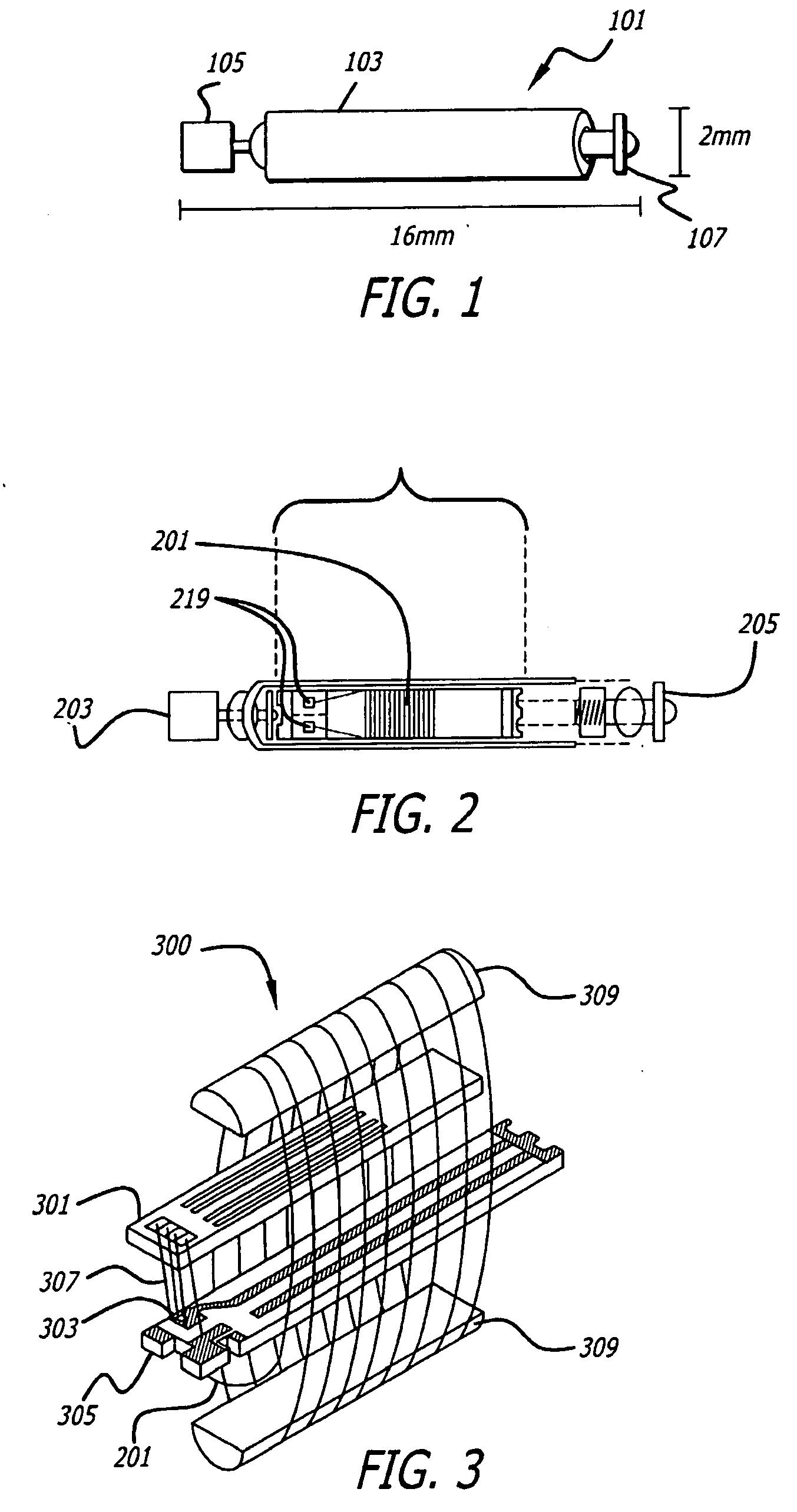Switched reactance modulated E-class oscillator
a technology of reactance modulation and oscillator, which is applied in the direction of oscillation generator, pulse technique, therapy, etc., can solve the problems of significant physical limits on power, data transmission and packaging, stringent requirements, etc., and achieve the effect of reducing the frequency of the drive signal, reducing the frequency of the oscillation, and reducing the oscillation frequency of the tank circui
- Summary
- Abstract
- Description
- Claims
- Application Information
AI Technical Summary
Benefits of technology
Problems solved by technology
Method used
Image
Examples
Embodiment Construction
[0041] In the following description of illustrative embodiments, reference is made to the accompanying drawings. It is to be understood that other embodiments may be utilized and structural and functional changes may be made without departing from the scope of the concepts that are presented.
[0042] FIG. 1 illustrates a BION 101. It may be encased in a glass sheath 103 and may have two electrodes, a Ta electrode 105 and an Ir electrode 107. BION 101 may have a size of about 2 mm in diameter and 16 mm in length. The small size may allow the BION to be implanted by injection in an outpatient procedure that may be performed by a physician. The size may allow the BION to be placed in a small, deep, or hard-to-reach muscle that may be difficult to stimulate effectively from the skin surface. The small size and wireless nature of the implantable BION may minimize the threat of infection, skin breakdown, and tissue damage. Other types of implants may be too large, particularly in areas wher...
PUM
 Login to View More
Login to View More Abstract
Description
Claims
Application Information
 Login to View More
Login to View More - R&D
- Intellectual Property
- Life Sciences
- Materials
- Tech Scout
- Unparalleled Data Quality
- Higher Quality Content
- 60% Fewer Hallucinations
Browse by: Latest US Patents, China's latest patents, Technical Efficacy Thesaurus, Application Domain, Technology Topic, Popular Technical Reports.
© 2025 PatSnap. All rights reserved.Legal|Privacy policy|Modern Slavery Act Transparency Statement|Sitemap|About US| Contact US: help@patsnap.com



